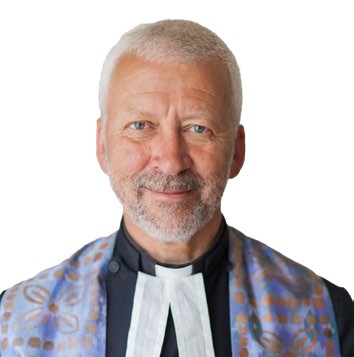MEDITATION
A new world
The Rev Dr Richard Frazer says the church of the future may look radically different to that of today.

The Rev Dr Richard Frazer
I WONDER if the church of the future might look quite different, even unrecognisable to some.
In the Acts of the Apostles, we read about the formation of the fledgling church. People gathered to share their lives together, to pray and support one another. Each day, new people joined. Some were teachers, some were prophets and some served those in need, making clothes for the poor like Dorcas. The hallmarks of the early church were kindness, hospitality and living generously alongside prayer and breaking bread together.
Over the years during which we established the Grassmarket Community Project, a central part of the ministry of Greyfriars Kirk in Edinburgh, similarities have struck me with the description of the early church in Acts.
Recently a probationer minister, Cat Rawlinson-Watkins, spent some valuable time seeking to understand how the Holy Spirit shapes the life of the Grassmarket community. She came up with results that confirm our sense that the Spirit is indeed active and at work there.
Of the members interviewed, 67% said that they believed in God. Speaking about God, they used words like ‘justice’, ‘truth’, ‘peace’, ‘harmony’ and ‘good’. Of those interviewed, 80% said they believed in miracles and a similar number affirmed that spirituality was important to them.
Here is what our researcher wrote in conclusion: “Immediately following the interviews, the majority of participants requested that a group was formed to discuss and explore the matters in the questionnaires and interview. A core group of nine people have met weekly since and new people have joined each week, each expressing a desire to continue”.
Contrary to what we often tell ourselves in the church, the message of the Gospel has not so much declined as spread. Everywhere there is spiritual light, and a hunger for community. Have you ever read a novel or watched a film and thought, ‘this is not overtly a religious work of art, but it absolutely chimes with my understanding of the Gospel?’ The outworking of the Spirit transcends the boundaries of organised religion – present in the compassion of the counselling room, the offer of welcome to the stranger, amongst those who undertake the hard road of peace making and in the hearts of writers and artists who explore the depth of the human condition and our common longing to belong to the heart of life.
It is inspiring to see generosity and care shown among members of the Grassmarket Community Project. People have said to me, ‘it is good work but it is not church’. Certainly, we do not have sermons and prayers, though we often have a church service after a member has died. Then people say, ‘not all your staff are Christian so how can this be a Christian community?’
I think of those in Jesus’s inner circle, disturbed by people outside his group healing people in Jesus’s name. This is how John brought the subject up: “John answered, ‘Master, we saw someone casting out demons in your name, and we tried to stop him, because he does not follow with us.’ Jesus said to him, ‘Do not stop him; for whoever is not against you is for you.’”
“
Contrary to what we often tell ourselves in the church, the message of the Gospel has not so much declined as spread.
The Grassmarket Community Project is certainly a healing place.
In the days after the resurrection, the old guard of Jesus’s inner circle dismissed the women who announced his resurrection. ‘Idle tales told by women’, they declared. It took them a while to realise that resurrection is not the same thing as restoration. A new world was emerging after the catastrophe of Good Friday.
Is something similar happening today?
I often wonder if the future church will be unrecognisable to some. It may well also take on some of the characteristics of the early church as described in the Acts of the Apostles.